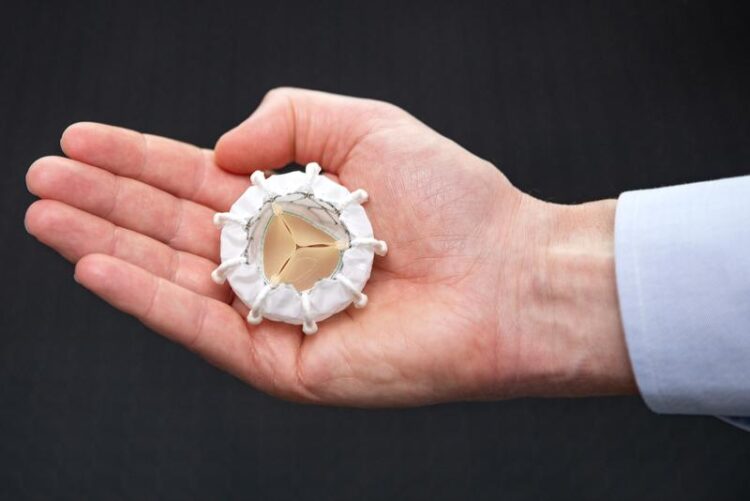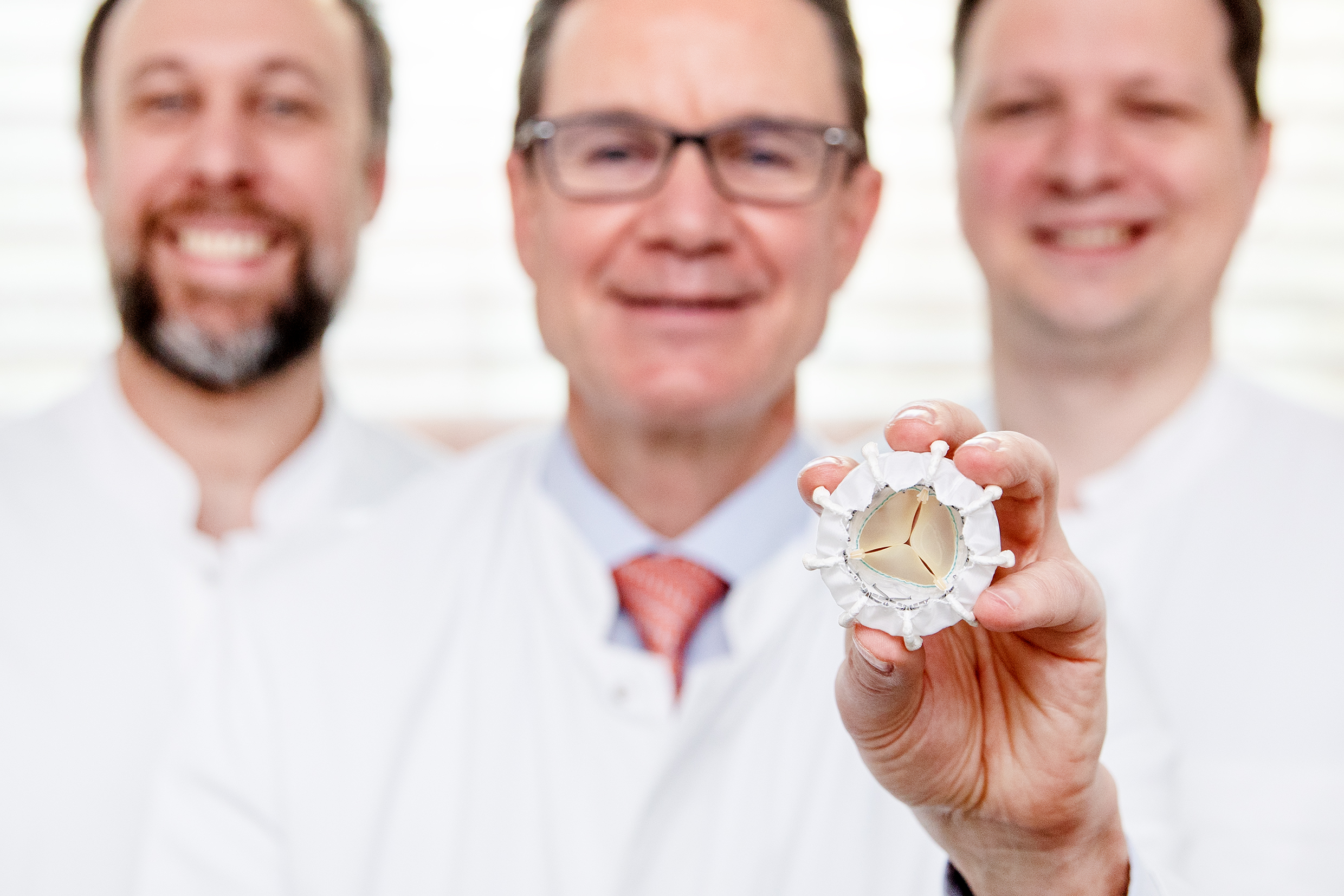Innovative heart valve replacement

The novel prosthesis for the tricuspid valve: it is inserted into the heart using a catheter and positioned there.
(c) Karin Kaiser /MHH
Innovative therapy: MHH cardiology can now replace any heart valve in a minimally invasive procedure.
First patient receives tricuspid valve without major surgery thanks to innovative catheter system.
The human heart has four heart valves. They ensure that the blood flows in the correct direction with every heartbeat. If a heart valve no longer closes properly, it may need to be replaced with a prosthesis. Until now, it was only possible to perform this procedure minimally invasively, i.e. without major surgery, in the case of three heart valves. Thanks to a new type of catheter system, this is now also possible for the fourth valve, the tricuspid valve. The Department of Cardiology and Angiology at Hannover Medical School (MHH) was one of the first institutions in Germany to introduce the procedure. At the end of March, the first so-called Evoque prosthesis in Lower Saxony was implanted in a patient there.

The new prosthesis for the tricuspid valve: it is inserted into the heart using a catheter and positioned there. Copyright: Karin Kaiser / MHH
Valuable addition to therapy services
“The new catheter-based system is a valuable addition to our existing treatment options for heart valve defects,” explains Professor Dr. Johann Bauersachs, Director of the Department of Cardiology and Angiology. “It is particularly suitable for patients with a severe leak in the tricuspid valve that cannot be repaired with other available treatment methods.” The tricuspid valve is the valve between the right atrium and the right ventricle. Through it, deoxygenated blood flows from the body into the right ventricle and is pumped from there into the lungs. The valve prevents the blood from flowing back into the right atrium during the pumping process. If it is leaking, patients often suffer from shortness of breath, water retention in the legs and fatigue.
Intervention with a specialized heart team
The first patient to receive the new type of prosthesis at the MHH is Karin D. from Hanover. The athletic, slim woman’s heart has been causing her problems for some time. “I had three bypasses in 2019.During the subsequent rehabilitation stay, it was discovered that two heart valves were also leaking. One of them was the tricuspid valve,” reports the 75-year-old.Karin D. quickly became short of breath during physical exertion. “I was no longer able to exercise and could no longer be active without worry,” she says, describing her condition before the procedure. “In view of her medical history and after careful consideration of all therapeutic options, we decided on catheter-based implantation of the valve replacement for Mrs. D..We were pleased to be able to offer her this new procedure,” says Professor Dr. Tibor Kempf, who carried out the operation together with his colleague Dr. Dominik Berliner and a specialist heart team.
Prosthesis unfolds in the heart
In this complex method, the specialists use a catheter to insert the prosthesis into the heart via a groin access through the vena cava. There they anchor the prosthesis in the natural heart valve. The Evoque prosthesis is made of connective tissue and has a nitinol wire mesh on the outside. This mesh is first compressed in the catheter for transportation to the heart. Once in the heart, it is then released at the desired position and unfolds. The entire procedure is monitored by the heart specialists using ultrasound and the patients are under general anesthesia. “The new valve adapts to the anatomical conditions and immediately takes up its function,” explains Dr. Dominik Berliner.The blood is pumped through the prosthesis – just like with a natural valve.
New heart valve reduces symptoms
Patients can be discharged from hospital a few days after the procedure. “With a new heart valve, the symptoms usually subside significantly. As a result, patients regain a high level of quality of life,” says Professor Kempf. Karin D. is confident that this will also be the case for her. Two days after the implantation, she feels well. “We hope to be able to treat even more people with the new catheter-based system in the future. Innovations like this help to improve the overall quality of care and enable us to offer our patients tailored treatment options,” emphasizes Clinic Director Professor Bauersachs.
Text: Tina Götting
Media Contact
All latest news from the category: Medical Engineering
The development of medical equipment, products and technical procedures is characterized by high research and development costs in a variety of fields related to the study of human medicine.
innovations-report provides informative and stimulating reports and articles on topics ranging from imaging processes, cell and tissue techniques, optical techniques, implants, orthopedic aids, clinical and medical office equipment, dialysis systems and x-ray/radiation monitoring devices to endoscopy, ultrasound, surgical techniques, and dental materials.
Newest articles

NASA: Mystery of life’s handedness deepens
The mystery of why life uses molecules with specific orientations has deepened with a NASA-funded discovery that RNA — a key molecule thought to have potentially held the instructions for…

What are the effects of historic lithium mining on water quality?
Study reveals low levels of common contaminants but high levels of other elements in waters associated with an abandoned lithium mine. Lithium ore and mining waste from a historic lithium…

Quantum-inspired design boosts efficiency of heat-to-electricity conversion
Rice engineers take unconventional route to improving thermophotovoltaic systems. Researchers at Rice University have found a new way to improve a key element of thermophotovoltaic (TPV) systems, which convert heat…



